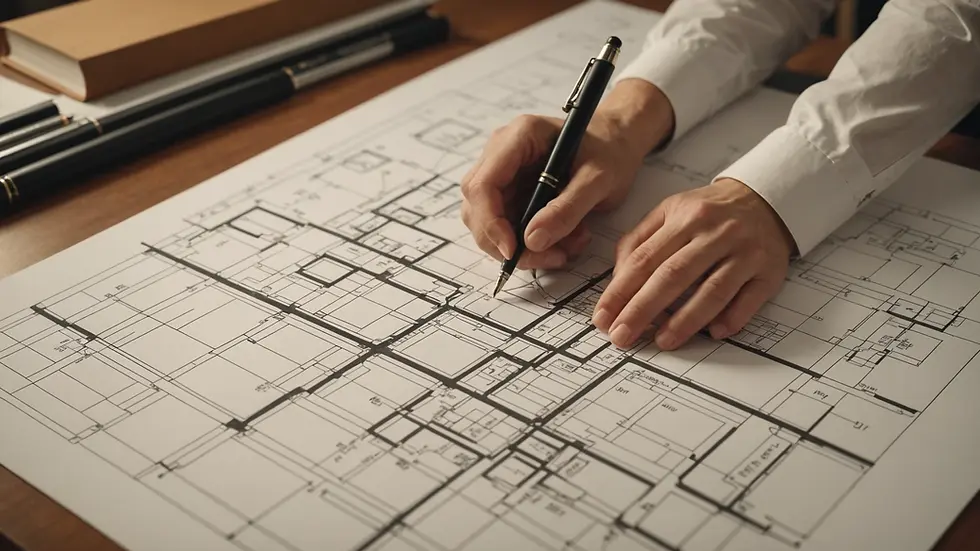Office Feasibility Studies
- tmiller813
- Feb 13
- 3 min read
Updated: May 9
In today's rapidly shifting business environment, establishing an effective office space is essential.
An office feasibility study stands out as a vital tool that guides companies in assessing the potential success of their office projects.
Rather than relying on gut feelings, businesses can depend on solid data to evaluate viability, identify challenges, and maximize investment returns.
What is an Office Feasibility Study?
An office feasibility study is a detailed assessment of various factors surrounding a proposed office project.
This analysis includes financial, legal, and operational dimensions, empowering stakeholders to make informed decisions based on credible information.
Undertaking a feasibility study requires thorough research.
It considers critical areas such as location, market demand, budget allocation, design essentials, and operational efficiency.
Organizations planning to launch a new office or undertake a significant redesign can find valuable insights that reveal potential hurdles and interesting opportunities.
Why You Should Consider a Feasibility Study
Risk Reduction
One key advantage of conducting an office feasibility study is its ability to reduce risk.
For example, if a study reveals that only 30% of local businesses in the area require additional office space, it can prevent firms from investing in a location with inadequate demand.
Identifying these risks early enables effective strategies to tackle them, saving time and resources.
Strategic Planning
A well-conducted feasibility study lays the groundwork for effective strategic planning.
By examining current market conditions and potential future growth, companies can design workspaces that meet both current needs and anticipate future demands.
For instance, businesses that recognize a 20% increase in remote work trends can adjust their designs to accommodate flexible workstations.
Financial Assessment
Financial implications are a crucial component of any office project.
A thorough feasibility study meticulously examines costs, expected revenues, and the potential return on investment (ROI).
For instance, recognizing hidden expenses related to maintenance or utilities before construction can prevent future financial strain and promote more accurate budgeting.
Boosting Stakeholder Confidence
A detailed feasibility study enhances stakeholder confidence, including investors and management.
For example, presenting data that indicates a potential 15% increase in local office demand can assure stakeholders about the project’s viability.
A comprehensive report reflects professionalism, fostering trust and commitment throughout the project’s lifecycle.
Essential Elements of an Office Feasibility Study
Market Analysis
The market analysis evaluates demand for office space in a targeted area.
By examining local market trends, vacancy figures, and competitor offerings, businesses can better understand the suitability of their proposed location.
For instance, a vacancy rate of only 5% may indicate high demand, suggesting a favorable environment for new office developments.
Location Assessment
Assessing a site’s attributes is vital. Consider factors like accessibility, nearby amenities, and transportation infrastructure, as they heavily influence occupancy rates and business viability.
A prime location can lead to a 25% increase in occupancy over less advantageous sites.
Budget Analysis
The budget analysis assesses projected costs related to development, construction, and ongoing operations.
Identifying financial gaps and potential funding sources can significantly enhance project feasibility.
For example, an analysis might reveal that securing a grant could cover 10% of construction costs.
Regulatory Considerations
Understanding legal and zoning requirements is essential for compliance.
A feasibility study outlines possible regulatory issues, allowing businesses to address them early.
Avoiding legal complications can save organizations thousands in fines and delays.
Design and Workflow Evaluation
An analysis of office layout and design plays a crucial role in employee productivity.
A study might suggest that open floor plans can boost collaboration and productivity by as much as 15%.
By optimizing space based on employee needs, companies can enhance workplace satisfaction and efficiency.
Implementing Insights
Once the feasibility study wraps up, the real work begins by implementing its findings.
This stage involves collaborating with designers, project managers, and contractors to translate research insights into actionable plans.
Clear communication with all stakeholders is essential to ensure alignment and commitment to the project goals.
Regularly reviewing and adapting plans based on the feasibility study can lead to a successful office project.
Final Thoughts
The importance of office feasibility studies cannot be overstated.
They act as a roadmap for successful project implementation, minimizing risks through thorough analysis.
Organizations planning to create or redesign office spaces significantly benefit from utilizing feasibility studies in their planning approach.
Investing time and resources into a detailed feasibility assessment not only enables informed decision-making but also strengthens stakeholder confidence and optimizes the use of financial and physical resources.
In an era where adaptability is key, a comprehensive office feasibility study serves as a proactive strategy for organizations eager to excel in today’s dynamic workspace landscape.







Comments